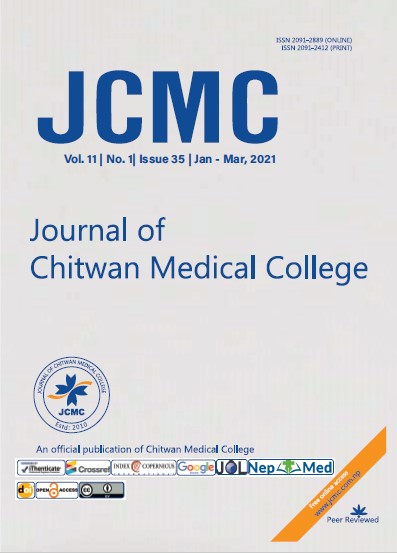Study of sutural morphology of pterion among human adult Nepalese skulls
Abstract
Background: The sutural morphology of the pterion is important in surgical approaches to the cranial fossae. The pterion portrays variations in the sutural pattern of the fusion of constituent bones. Pterion depicts the H-shaped sutural junction of frontal, sphenoid, parietal, and temporal bones within the temporal fossa. The pterion is known to be the weakest part of the skull.
Methods: All together 24 dry human skulls were collected from the Department of Anatomy at Chitwan Medical College for the study. Sex and ethnicity of the skulls were undefined. All damaged skulls excluded from the study. Both the sides of the skull were studied for the locations and types of pterion. The shape and type of pterion were noted by observing the articulation of the bones. Photographs were taken and were studied. Statistical analysis was done using Microsoft excel 2019 and analyzed as frequency and distribution.
Results: Twenty-four human skulls of known gender were examined. Three types of pterion were observed. The sphenoparietal- 66.66%, frontotemporal- 25% and stellate - 8.4%.
Conclusions: We believe that there are different patterns of pterion present in human skull. Since pterion is an important surgical landmark, the findings may be helpful in surgical approach and intervention.




